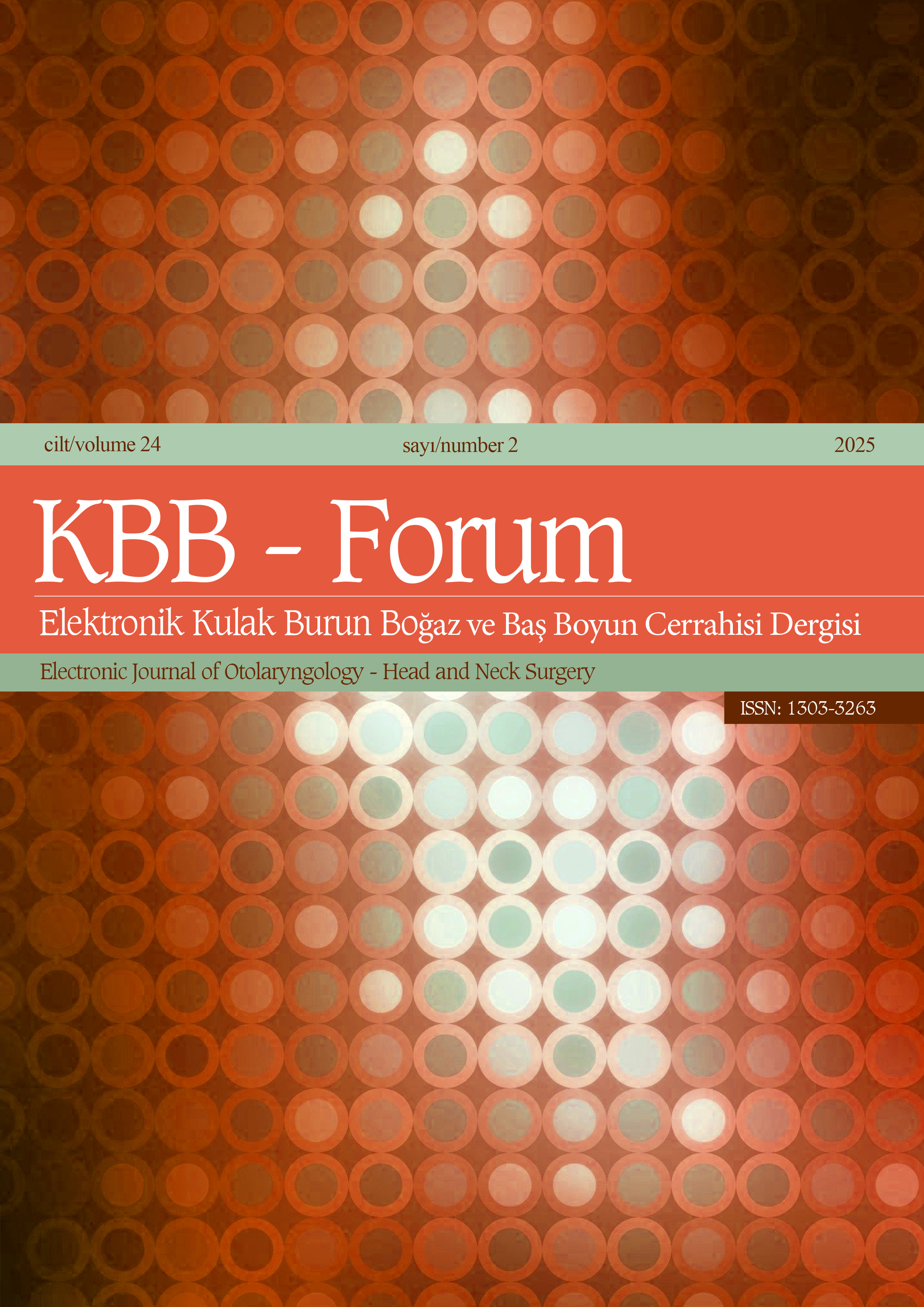LANGUAGE DEVELOPMENT IN CHILDREN WITH UNILATERAL HEARING LOSS: UNILATERAL AURAL ATRESIA AND SINGLE SIDED DEAFNESS
1Anadolu Üniversitesi Sağlık Bilimleri Fakültesi, Dil ve Konuşma Terapisi Bölümü, Eskişehir, Türkiye2Hacettepe Üniversitesi Sağlık Bilimleri Fakültesi, Odyoloji Bölümü, Ankara, Türkiye Objective: The aim of this study is to investigate the effects of single sided deafness (SSD) and unilateral aural atresia (UAA) on receptive and expressive language skills, as well as to compare these skills in children with SSD, UAA, and NH.
Material and Methods: This study included 12 children with SSD, 15 children with UAA, and 15 children with normal hearing (NH). Their ages ranged from 2 to 8 years. The Turkish-Early Language Development Test (TEDIL) was used to evaluate the receptive and expressive language development of the children.
Results: The statistical analysis revealed that there was no significant difference between the SSD and UAA groups' receptive, expressive, and spoken language skills (p>0.017), whereas the NH group had significantly higher receptive, expressive, and spoken language skills than both groups (p<0.017).
Conclusion: The lack of differences between the SSD and UHL groups and the poorer language skills compared to those with NH suggest that children with UAA and SSD appear to have significant risk for receptive and expressive language delays. In order to reduce the possibility that these children will lag behind their peers in receptive and expressive language, it is crucial that their language development should be evaluated carefully. Also, further studies are needed to determine what kinds of auditory amplification or special education are effective in rehabilitating children with UHL for their delayed language development.
Keywords : Unilateral hearing loss; aural atresia; single sided deafness; language development



